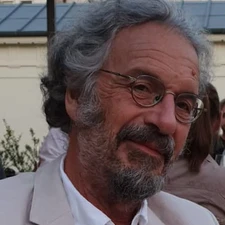Harro Schmeling

The 2020 Augustus Love Medal is awarded to Harro Schmeling for his outstanding contributions to understanding the dynamics of the mantle, lithosphere and two-phase flow.
Harro Schmeling has made many outstanding contributions to a large range of topics in geodynamics. These range from developing the first computer models for understanding lithospheric dynamics, addressing coupling between mantle and lithospheric deformation, understanding the physics of melt migration and developing upscaling techniques, to technical developments that helped to advance the numerical geodynamics community.
Particularly impressive is the rigour of Schmeling’s papers, in which models do not serve as a goal themselves but rather as experiments to unravel the underlying geodynamic processes, often developing scaling laws and parameterisations from the simulations. His earliest work was on the effect of partial melting of rocks on their (an)elastic and electrical properties, for which he developed micro-mechanical models to interpret observations. More recent work along the same lines showed how partial melting affects properties such as the bulk viscosity, which is a key parameter in two-phase melt percolation models.
Subsequently, Schmeling focused on the physics of diapirism and produced a range of classic papers that have been influential in understanding the patterns and internal dynamics of salt structures, as well as that of diapiric structures in general. His models were performed on a scale that allowed them to be directly compared to geological observations, a topic that has always been relevant in his work. Schmeling also made a number of key contributions on the important effects of nonlinear rheologies and phase transition kinetics on subduction dynamics and mantle convection as well as on detachment and delamination of lithospheric roots, contributions that have shown that previous models with simpler rheologies are often insufficient to explain observations.
With students Schmeling demonstrated how partial melting of the lower crust may induce diapirism in the crust, as well the shapes that multiple diapirs take. He has played a key role in advancing computational geodynamics by being among the first to employ computer models to study both mantle dynamics and crustal-scale deformation, including by introducing the now immensely popular marker and cell approach to the geodynamics community, and being the first to adapt two-phase flow approaches to lithospheric deformation codes to better understand how magmatic processes affect tectonics.
Schmeling has also made invaluable contributions to the geodynamical community, both directly through community service, such as heading organising committees, and indirectly through the training of generations of successful geodynamicists and his many thorough, helpful and unselfish manuscript reviews. It is clear that without the many excellent achievements of Harro Schmeling, the geodynamical community wouldn’t be in the same position it is now. Harro Schmeling is therefore a very worthy recipient of the 2020 EGU Augustus Love Medal.
